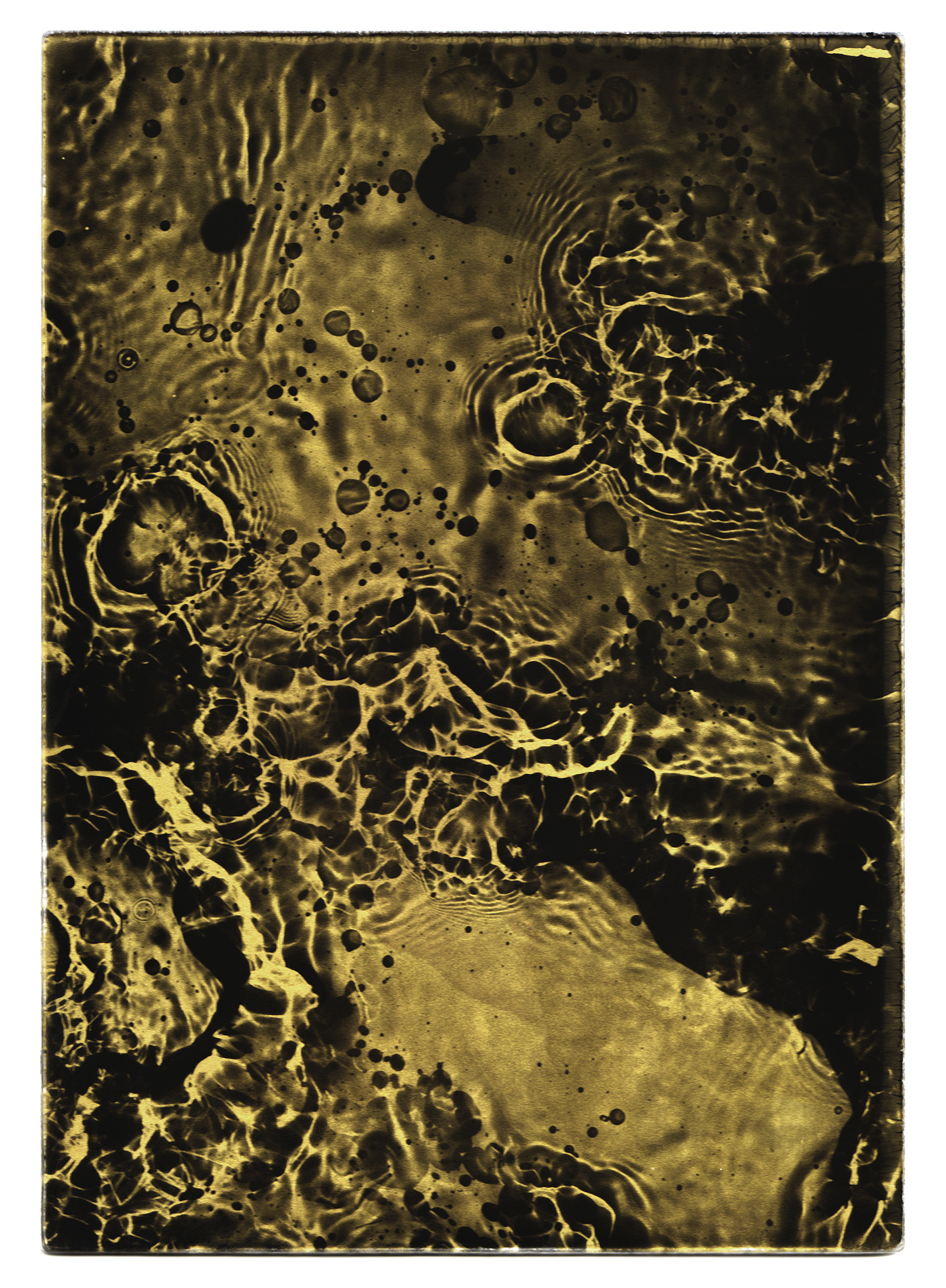
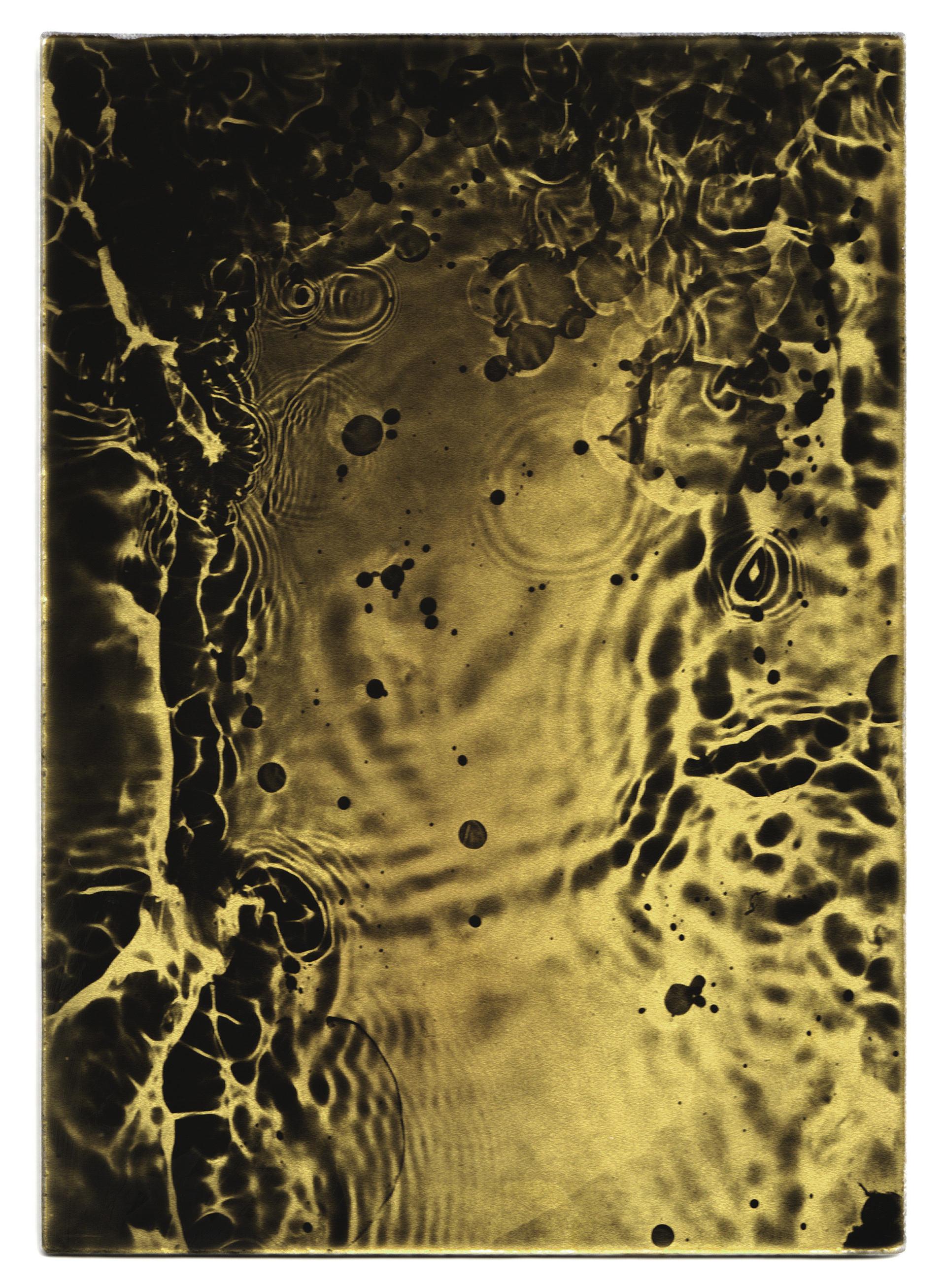
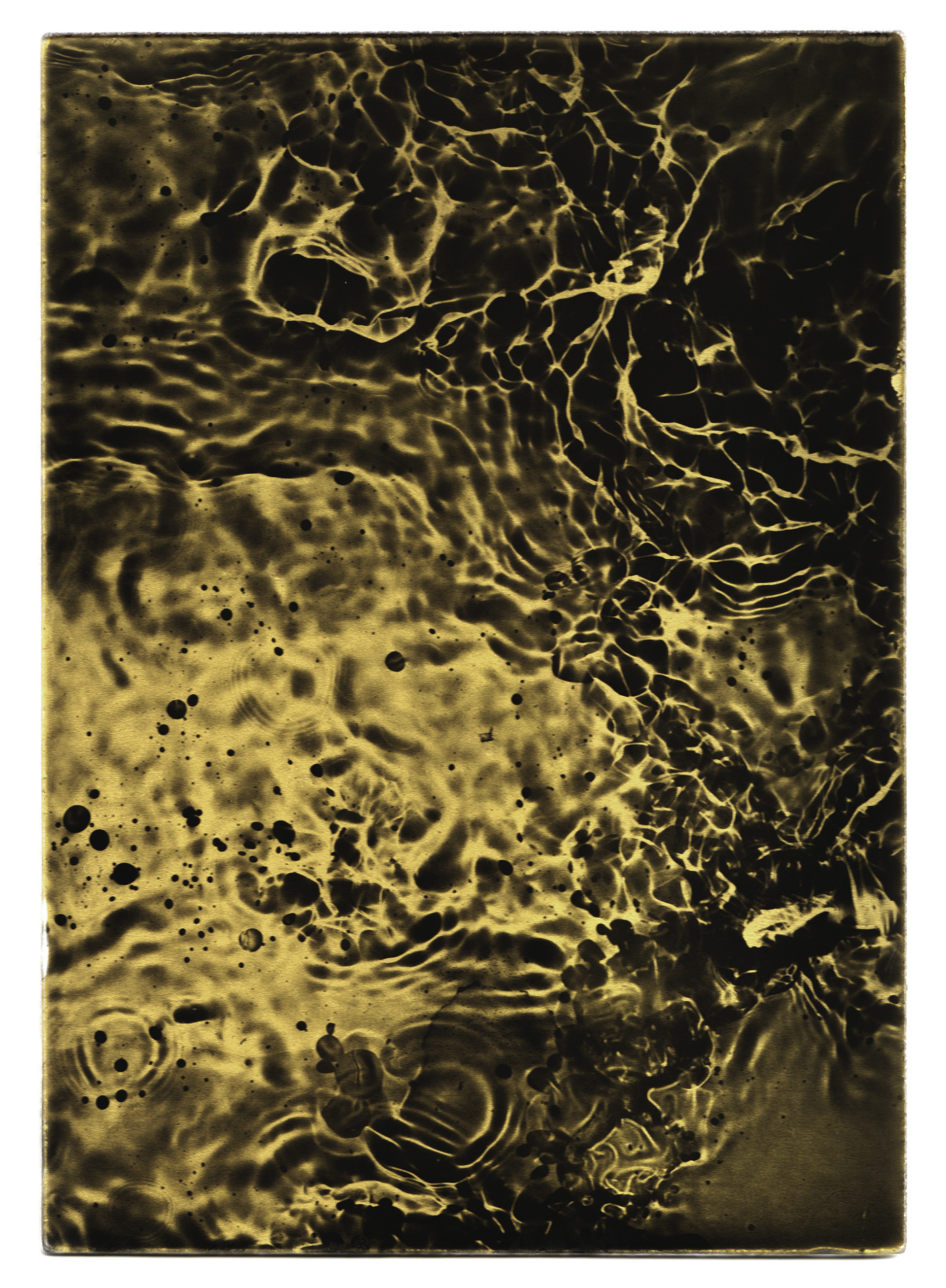
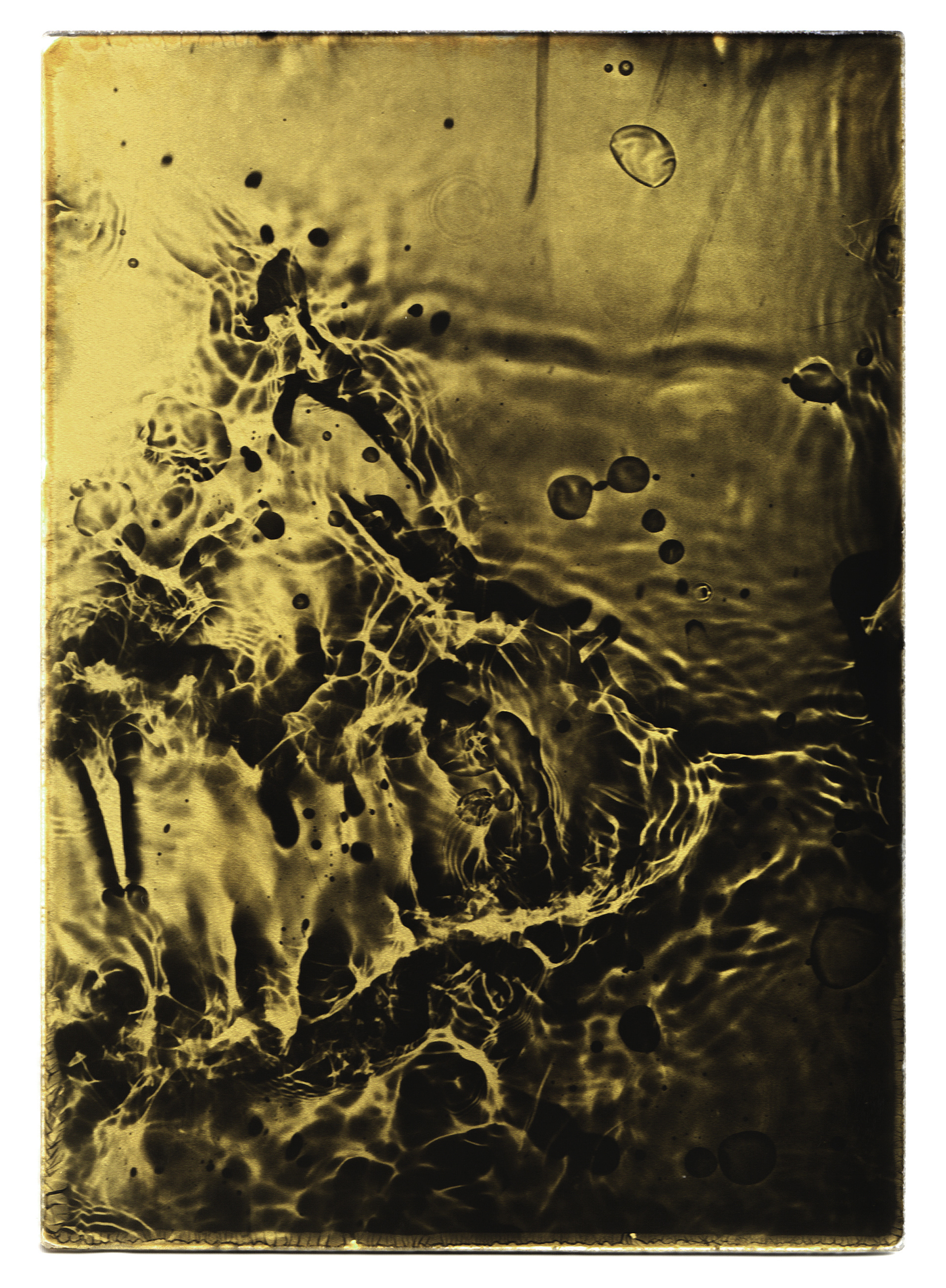
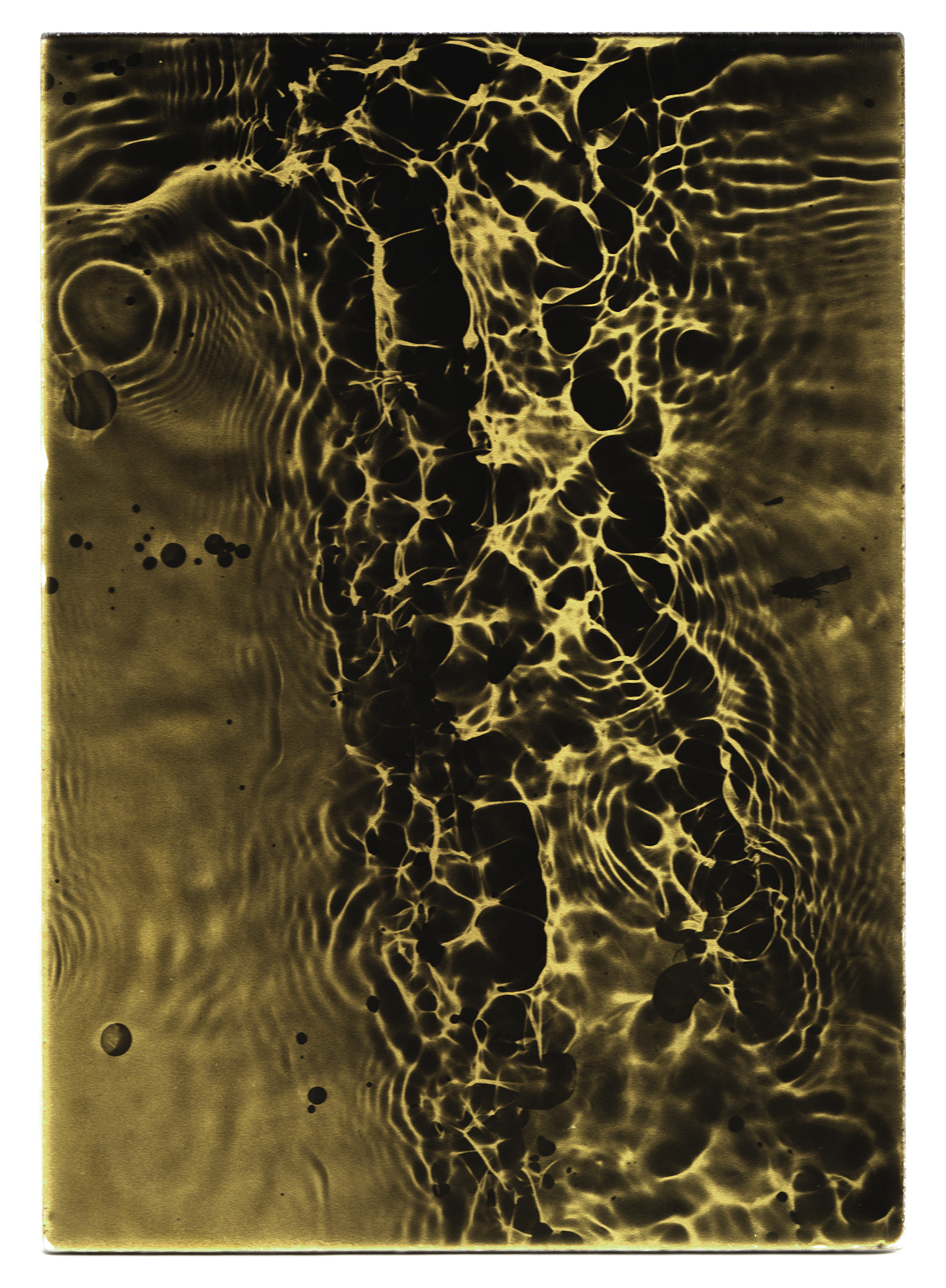
On 16 December 1989, protests against Nicolae Ceaușescu broke out in Timișoara, Romania. What began as a demonstration quickly turned in to a mass uprising. Security forces opened fire on the crowds, killing dozens. In the early hours of 19 December, around forty bodies were secretly loaded into a refrigerated lorry and taken to Bucharest. That night, they were cremated in secrecy, and their ashes scattered into a canal near Popești-Leordeni. When The River Ends, So Do We responds to this act of erasure. The work consists of five glass plates, each created with water drawn from the Dâmbovița River, which is the same river that carried the victims’ ashes. Each plate is backed with gold, recalling Orthodox iconography once banned under Communism. Where the regime sought to erase the dead, the work instead reframes them as sacred, not lost.




